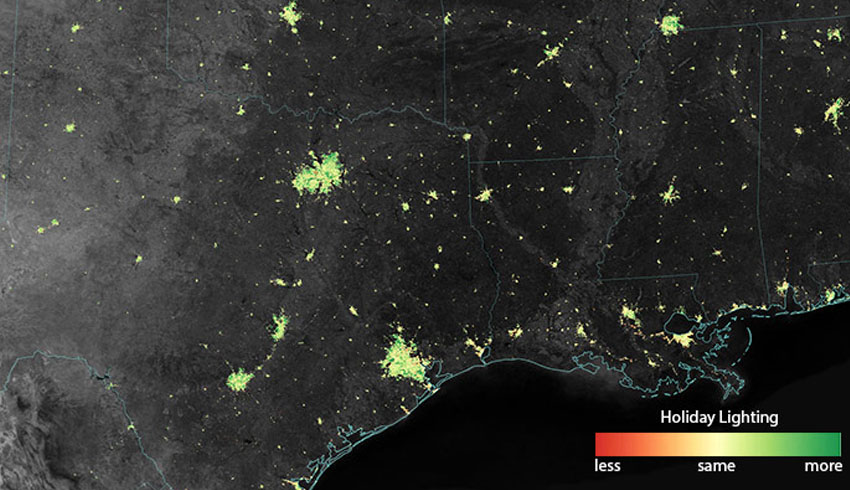The light intensity in these areas is 20 to 50 per cent more noticeable around Christmas and new year. The difference is most visible in rural and suburban areas, rather than in big cities like New York or Los Angeles, which are typically brighter anyway.
VIIRS sensors orbit the planet aboard two National Oceanic and Atmospheric Administration satellites, providing not only a view of holiday lights, but also critical environmental and weather data.
The tech uses 22 multi-spectral bands to look at different phenomena on Earth, including hurricanes and wildfires, and it uses a unique, day-night band to detect lights.
Amber Purohit, chief engineer on the VIIRS JPSS-2 program, said, "That is the story with VIIRS and in this case, with the day-night band. It continuously astounds people with new observations, like with beautiful, holiday lights imagery."
Images of holiday lights from space bring more than just holiday cheer – deeper analysis of VIIRS’ data provides insight into how, where and when holiday lights are used. And it could have practical applications for public utilities.
"These maps of city lights could be valuable for government agencies gauging and optimising power usage, or even for businesses that may want to project future sales of holiday lights," said Jeff Puschell, principal engineering fellow at Raytheon.
VIIRS can also spot brighter lights during other major celebrations, like Diwali, known as the celebration of lights, and Ramadan.
As VIIRS keeps an eye on holiday lights, NORAD tracks Santa as he goes around the world delivering presents. But could VIIRS also track Santa’s sleigh?
"Not unless Rudolph the reindeer was emitting more watts of light from his red nose," said Shawn Cochran, senior manager for civil and environmental space at Raytheon. "But you never know, we might see a bright, red light crossing the ocean one day."

